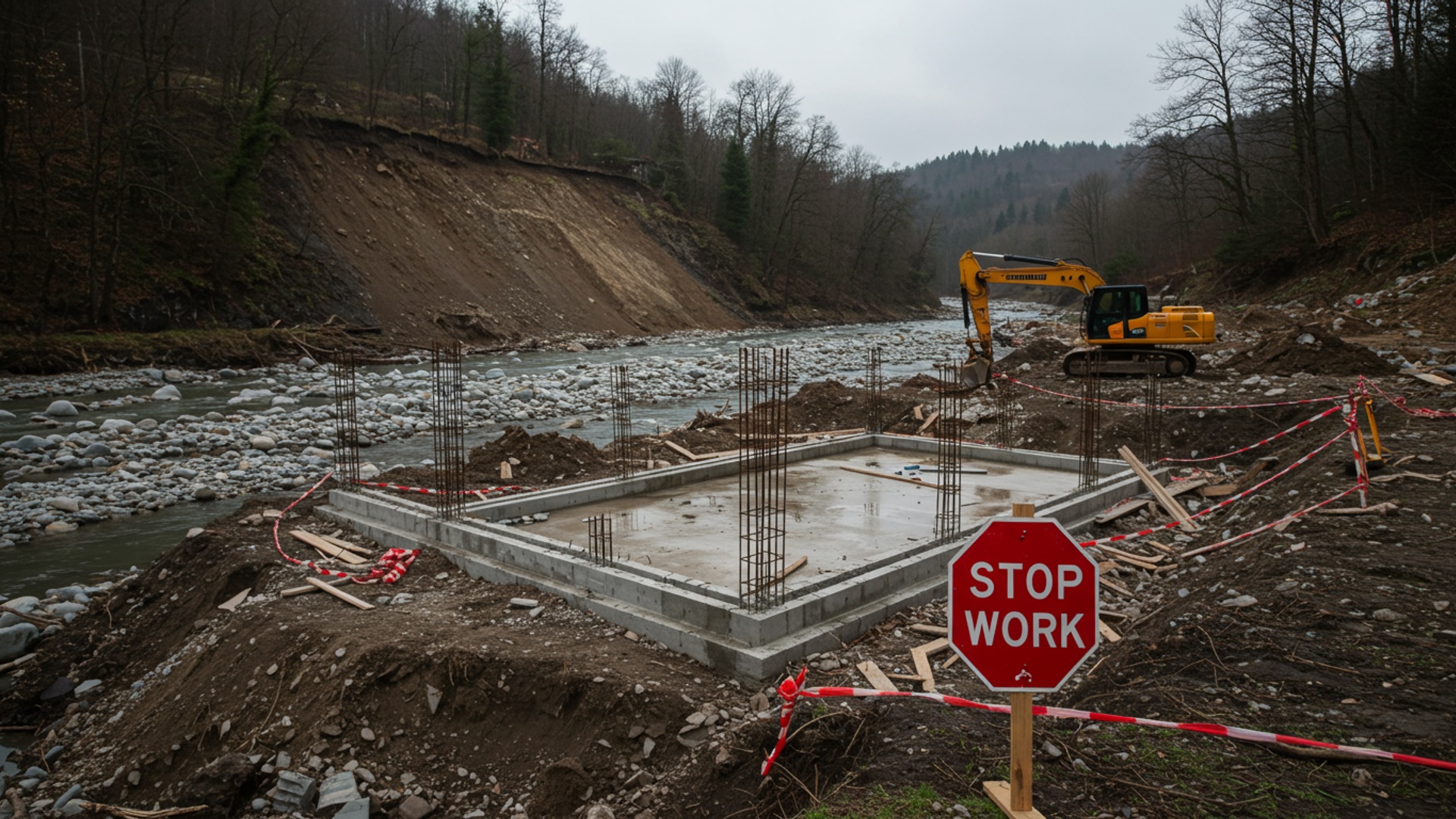After severe floods and landslides, Uttarakhand now bans all new building work in fragile river areas. This urgent move comes as the state tries to stop future damage and protect people living near rivers. Years of uncontrolled building near these waterways made many towns and villages open to great danger during heavy rains. Now, the government acts to make sure past disasters, which caused much loss of life and property, do not happen again. This tough new rule aims to keep homes and lives safe, changing how people build near the state’s powerful rivers for good.
New Rules for Safety
The government of Uttarakhand has put a stop to all new building work in areas close to rivers and in places that are at risk of landslides. This crucial decision comes after a recent flash flood in Dharali village, Uttarkashi, which caused much damage. Chief Minister Pushkar Singh Dhami has given clear orders for this ban. The ban covers both government and private building projects. The Chief Minister made this announcement during a high-level meeting with top officials. He said that no new buildings will be allowed on river banks, near streams, around natural water sources, or in areas prone to landslides and avalanches. The order also includes any spot marked as sensitive by geologists or those that are easily harmed by nature. This action is being taken to keep people and their property safe during heavy rains and extreme weather. Such events have become more common in recent years. The government aims to protect the hill state from the growing risk of natural disasters like flash floods, landslides. sudden bursts of water from glaciers.
Why This Ban Is Needed
The recent disaster in Dharali village, Uttarkashi, on August 5, 2025, showed how serious the problem of building in risky areas can be. A sudden surge of water, mud. rocks swept through the village, destroying homes and other buildings. At least five people were confirmed dead. many more were reported missing. More than 25 hotels, guest houses. houses in the market area of Dharali were completely destroyed. Even the old Kalpa Kedar temple was buried under the mud. Experts say that the huge damage in Dharali was made worse by building without proper checks and by people changing the natural path of rivers. Dharali village itself was built on loose soil left behind by old floods, which is naturally unstable. Building and spreading into such areas made the ground even weaker. Many environmental experts have warned that building in river flood zones blocks the natural flow of water, makes land weaker. adds to other environmental problems. When powerful mudflows hit built-up areas, the lack of space for water to pass through means buildings are struck with great force, leading to terrible loss of life and property.
The Danger of Building Near Rivers
Uncontrolled building work, especially in sensitive mountain areas, has made the land weaker. This includes putting up buildings on unstable slopes and on riverbanks that are known to flood. Roads, hotels. other structures built in risky zones have changed the natural environment. In the past, people in Uttarakhand traditionally settled on hilltops, while riverbanks were mostly used for farming. But, this pattern changed over recent decades due to more tourism and big building projects like power plants. When floods happened, hotels and other buildings close to rivers were washed away, showing the danger of such unplanned growth. The problem of building on riverbeds means that the natural paths for water are narrowed. This changes how water flows. When heavy rain or sudden water releases happen, the water cannot spread out naturally. it hits buildings with extreme force.
“This is a natural event turned into a disaster which is due to man-made reasons. Unregulated construction along the sides of small tributaries and rivers leads to devastation downstream. If BESZ Notification is implemented effectively, then construction along flood plains will be regulated and disasters can be prevented in case of these natural events.”
Old Warnings and New Problems
It is not the first time that rules have been put in place to control building near rivers in Uttarakhand. After severe floods in 2013, the state government had announced a ban on construction along river banks and in flood-prone areas. The Uttarakhand High Court also banned all building within 200 meters of rivers in 2013. Also, the National Green Tribunal (NGT) has given orders in the past, in 2015 and 2017, saying that no building work should be allowed in floodplains and within a certain distance from river edges in both hilly and flat areas. For example, in hilly areas, the NGT said that 50 meters from the river edge should be a “prohibited zone” where no building is allowed. These rules, But, have often been overlooked. Experts have repeatedly pointed out that the increase in tourism has led to a lot of new building work that does not follow the rules. For example, parts of the Char Dham road widening project have been a concern. Experts from a Supreme Court-appointed panel have warned that building roads in certain ways in the Himalayas can make the area unstable and lead to more disasters. They suggested other ways to build roads that would cause less harm to the environment.
Looking Ahead
The Uttarakhand government is now focusing on finding and marking all disaster-prone areas across the state. In these identified risky spots, no new settlements or building work will be allowed. Chief Minister Dhami has given very strict instructions to all district heads to follow these new guidelines immediately. He also stressed that there will be regular checks to make sure the rules are being followed. The Chief Minister has warned that strong action will be taken against any officer who does not follow these orders.
“Any violation of these instructions will be viewed seriously. Officers will be held accountable. Preventive action is not just policy—it is a responsibility,” said CM Dhami.
This focus is on taking action before disasters happen, not just reacting after them. The government wants all building and other work in Uttarakhand to put public safety first, keep nature balanced. aim for lasting growth.
Making Changes Last
For these new rules to truly work, it means a big change in how building is done in Uttarakhand. It calls for better planning and making sure that all rules about land use are properly followed to stop people from building in riverbeds and other risky areas. Local people also need to be made aware of the dangers they face. Training for disasters, practice drills. easy access to emergency shelters can greatly help in saving lives when problems occur. The government’s new push to ban building in vulnerable river zones highlights a wider need for building projects to be friendly to nature. Instead of large concrete buildings, future projects in the mountains should follow models that are kind to the environment. This includes keeping natural plants and trees to make slopes stronger and prevent soil from washing away. This overall approach aims to protect the fragile Himalayan region for a long time. ![]()








